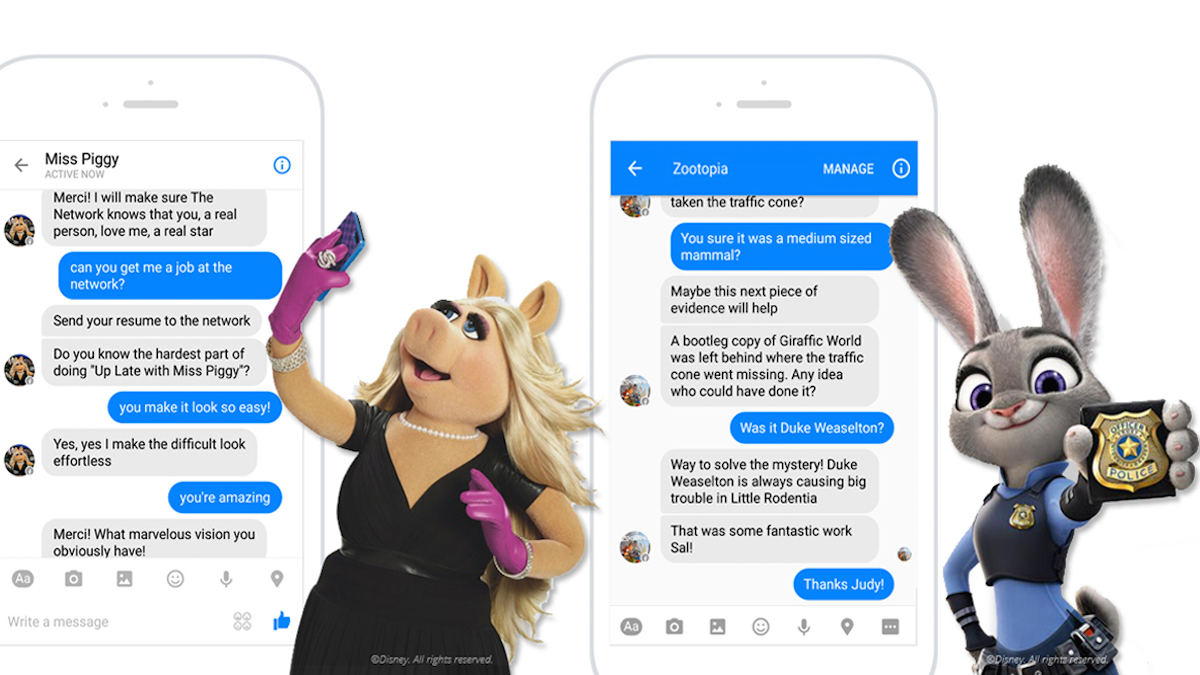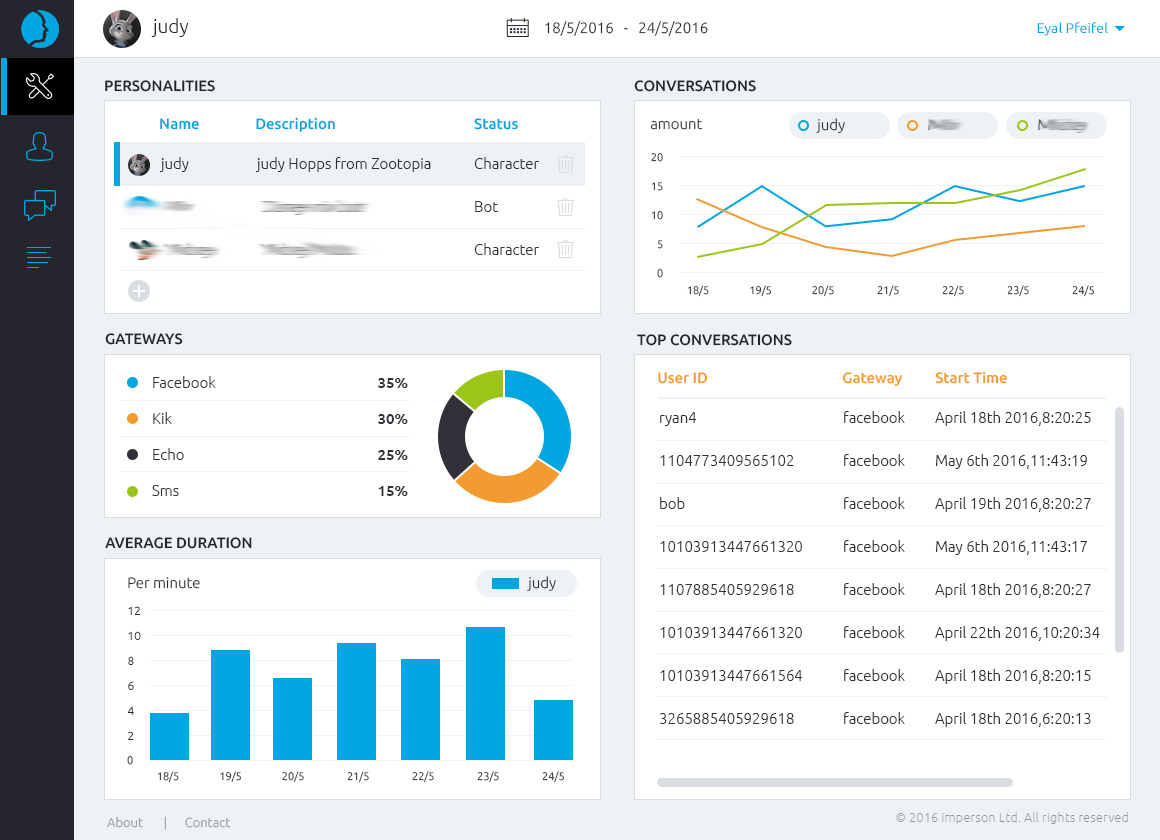Imperson unveils chatbot platform so you can create your own character
The self-service platform utilizes the same technology it employed to launch Miss Piggy and other chatbot personalities.
Imperson has specialized in character-based chatbots, like the Miss Piggy chatbot it developed for The Muppets on Facebook Messenger.
Today, the Israel-based company is releasing a self-service enterprise platform that allows its customers to create, test, deploy and analyze their own chat conversations, after some training but without any coding. In addition to Messenger, the platform is compatible with Kik, Slack, Twitter and Amazon Echo, and the company said it is developing voice and text chatbots for Skype.
The platform is available at no additional charge to the company’s customers, Imperson CEO and co-founder Eyal Pfeifel told me, but there are charges for the actual chatbot deployment.
It employs the same technology that Imperson has internally used to build chatbots, which involves a natural language processing (NLP) engine that parses any incoming text and determines what the user means.
The engine then returns the most appropriate pre-written responses, which Imperson says results in “contextually deep” conversations. As part of a conversation, chatbots might ask the user where they live or other questions that can help fill in that user’s profile.
While Imperson doesn’t yet have stats on brand-authored chatbots created with this new self-service version of its technology, it says that the chatbot of Judy Hopps for Zootopia on Messenger — which it built using this platform — resulted in millions of personalized messages being exchanged within two weeks.
Conversations with its chatbots, the company says, generally last an average of nine minutes, and a fifth of the users return to re-engage with the brand or the character. Images or video can also be sent from the chatbot engine as part of the conversation, if those media types are supported by the chat platform.
A typical use case, Pfeifel said, is “a marketing and sales scenario,” where a chatbot can add a responsive personality to the brand’s side of the experience. He noted that the chatbot doesn’t necessarily have to be a famous character, or even a character at all, but it’s helpful to the brand if there is some consistency to the responses that offers “a connection with something.”
While Pfeifel contends there are “no direct competitors” to this new platform, he points to PullString (formerly, ToyTalk) and Sequel as also offering chatbot creation tools.
The differentiator, he said, is that Imperson’s platform can generate “more comprehensive, fully customizable experiences.”
“They’re similar to us,” he told me, “but we’re higher quality.”
Contributing authors are invited to create content for MarTech and are chosen for their expertise and contribution to the martech community. Our contributors work under the oversight of the editorial staff and contributions are checked for quality and relevance to our readers. MarTech is owned by Semrush. Contributor was not asked to make any direct or indirect mentions of Semrush. The opinions they express are their own.
Related stories

